GCSE geography - glaciers
1/138
Earn XP
Description and Tags
Name | Mastery | Learn | Test | Matching | Spaced |
|---|
No study sessions yet.
139 Terms
what are the three types of rocks?
igneous, metamorphic, sedimentary
what is sedimentary rock/how is it formed?
sediments compressed over time into layers to form rocks
what are 3 examples of sedimentary rock?
chalk, limestone, sandstone
where is sedimentary rock found in the UK?
south east
what is igneous rock/how is it formed?
solidified lava which forms rocks
what is an example of igneous rock?
granite
where is igneous rock found in the UK?
north west
what is metamorphic rock?
rock that has been changed by heat/pressure
what is an example of metamorphic rock?
gneiss rock
where is metamorphic rock found in the Uk?
North West
order of rock from hardest to softest
igneous, metamorphic, sedimentary
what is relief?
the shape and height of land (steep or gentle?)
what is relief like in the uk? (3)
huge variation
above tees-exe line: land is much higher (200m+ above sea level
below tees-exe line: land is much lower (less than 100m above sea level)
where is the tees-exe line?
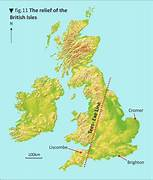
what was the last ice age called
the pleistocene
when was the pleistocene
20,000-2 million years ago
why did the pleistocene last so long
there were periods of cooling and warming
where did the uk ice cover extend across (3)
south wales
most of north england
the humber estuary (norfolk)
how is ice formed
over time, layers of snow (which don’t melt) become compressed as they build up and form ice
how are glaciers formed
when layers of compressed snow and ice build up, glaciers are fomed
what is the glacier system
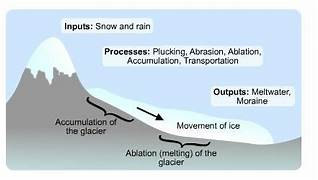
what are the inputs in the glacier system
snow, rain
what are the processes in the glacier system
plucking, abrasion, ablation, accumulation, transportation
what are the outputs in the glacier systems
meltwater, moraine
what is the snout of the glacier
the front
when is the glacier retreat
summer
when is the glacier advance
winter
what is firn? (in terms of density of air)
snow/ice with 20-30% air
what is ice (in terms of density of air)
snow/ice with less than 20% air
what is ablation?
melting
what happens in the zone of accumulation?
the area where glaciers build up (normally high altitudes, low temperatures), then move down the valley due to gravity
what happens in the zone of ablation?
the area where the glacier starts to melt due to higher temperatures
what is meltwater
water formed by the melting of snow and ice
what is moraine
rocks picked up by the glacier and deposited again
what is the glacial budget
the balance between inputs (accumulation) and outputs (ablation)
what is a positive glacial budget
when the inputs are greater then outputs, the glacier increases in size
what is a negative glacial budget
when the outputs are greater then inputs, the glacier decreases in size
what is a case study of a glacier?
south cascade glacier (north western usa)
trends of the south cascade glacier? (2)
majority of years theres a negative glacial budget
maximum loss occurred 1998 onwards
what is weathering
the breakdown of rock in situ (it’s original position)
what is erosion (2)
wearing away of the land’s surface due to glaciers moving over it
land is also eroded by rivers and waves
are erosion and weathering the same thing
no
explain the process of freeze thaw weathering
water seeps into cracks and fractures in rocks
when the water freezes, it expands 9-10% in volume, wedging the rock apart
this process repeats, breaking the rock into pieces

what is evidence that freeze-thaw weathering is occurring
scree
what is scree
small angular rocks
why is freeze thaw weathering vital
it creates scree which falls into the sides of the glacier and be a vital part of abrasion
what is abrasion
when glaciers move, scree scratches the bedrock leaving deep grooves called striations
what is plucking
the newly freezing rock travels in one direction, picking up rock with it and dragging it along
when is there more pressure and what will this mean?
during plucking, so there will be melting
when is there less pressure and what will this mean?
during abrasion, so there will be freezing
what is basal slippage
when the weight of the glacier puts a lot of pressure on the base, causing the bottom few cm of ice to melt
what is the result of basal slippage
reduces friction between the glacier and bedrock and allows the glacier to move
what is rotational slip
if the rock below the glacier is curved, then the ice will move in a semi-circular motion (similar process to basal slippage)
what is internal deformation
when the layers make up the glacier flow at slightly different speeds.
due to internal deformation, what areas move the fastest?
the layers at the surface and the middle of the glacier
why do the layers at the surface move faster than at the bottom?
they have the least weight and pressure on them
why do the layers in the middle move faster than at the sides?
because there is no friction slowing it down, unlike the sides which are in contact with the valley slides
where does material in a glacier come from
plucking and freeze thaw weathering
why do glaciers deposit sediment?
because it becomes too heavy for the glacier to carry
what is glacial till
unsorted material of all different sizes that is deposited by the glacier
what is bulldozing
when the glacier advances, debris will be pushed forwards by the glacier snout
what is outwash
when meltwater running from the snout of the glacier carries deposited material further down the valley
what is a corrie
a bowl shaped hollow with a steep backwall and a tarn
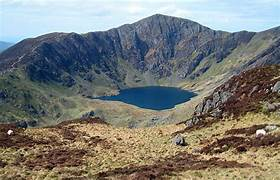
whats a tarn
a lake
where are corries found?
towards the peak of mountains
whats an arete
when 2 corries are formed back to back

whats a pyramidal peak
when 3+ corries are formed back to back

how is the base of a corrie made deeper
by abrasion
how is the backwall of a corrie steepened
by freeze thaw weathering and plucking
how is a corrie formed (5)
A corrie is a bowl-shaped hollow on a mountain side.
accumulation of snow on the mountain side: more snow builds up, pressure increases, snow compacts into ice, forms a glacier
The glacier erodes the surface through abrasion and plucking as the glacier migrates down the mountain.
Due to gravity, the glacier moves in a rotational slip, creating a steep back wall, bowl shape and a rock lip.
glacier melts. if water remains in the hollow, forms a tarn
what is a glacial trough
a u-shaped valley
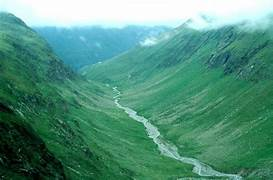
hows a truncated spur formed
when the glacier erodes the old river valley, wearing away the original interlocking spurs (cut short/broken off)
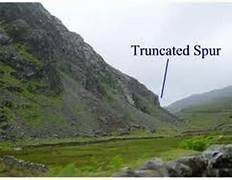
hows a hanging valley formed
the river tributaries have been left hanging high up on the valley sides, when the glacier beneath it retreats, melting away
what can hanging valleys form sometimes
waterfalls
what is an example of a ribbon lake
Wast Water (76m deep- deepest lake in england)
what type of stream runs through glacial troughs
misfit streams (extremely small, thin streams)
explain the formation of a glacial trough (3 steps)
formation of glacier (movement- gravity)
processes of erosion (plucking + abrasion), explain how a glacier moves
interlocking vs truncated spurs
explain the formation of a glacial trough (5 points, 4 marks)
glacier is formed when snow compresses to form ice high in the mountains, when layers of ice builds up
the glacier moves down the mountain due to gravity, and a thin layer of water on the bottom of the glacier allows it to slide downwards slowly
as the glacier moves, plucking and abrasion occur
the glacier moves, and erodes the spurs into truncated spurs
when the glacier retreats thousands of years later, it leaves behind a u shaped valley
how is a ribbon lake formed (5)
in an area of hard and soft rock, a glacier will form
glaciers are formed when layers of snow build up, increasing pressure, forming compressed ice
the glacier will erode the soft rock and create a basin shape
after thousands of years, the glacier melts to leave a body of water in the basin
the hard rock will remain and moraine may be deposited by the glacier, forming a dam to stop water overflowing
what is lateral moraine
ridges of glacial till
where is lateral moraine deposited
at the sides of the valley
what is medial moraine
a ridge of moraine
where is medial moraine found/deposited
the middle of the valley floor
when does medial moraine occur
when 2 glaciers meet
what is recessional moraine
small ridges of debris
where is recessional moraine deposited
at a temporary pause when the glacier is retreating
where is recessional moraine found
near the glacial snout
what is terminal moraine
marks the furthest extent of the glacier at its snout, and the time that the snout has stayed in the same place
where is terminal moraine found
near the glacial snout
where is ground moraine found
on the valley floor
what is ground moraine
till accumulating at the base of the ice and is deposited as it melts to form silt and clay
what can ground moraine be shaped by
glaciers as they move
what can ground moraine form eventually
drumlins
what is an erratic
pieces of rock which differ from the bedrock in the area in which they are found

how much do erratics weigh
can be thousands of tonnes
how can you easily notice erratics
they tend to be very out of place in their environment
what is the steep slope of a drumlin called
a stoss
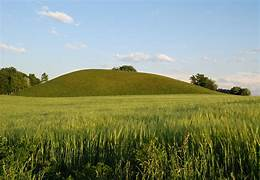
what is the gentle slope of a drumlin called
a lee
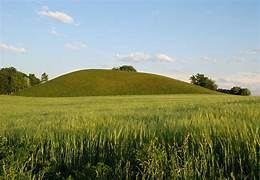
what is a group of drumlins called
swarm